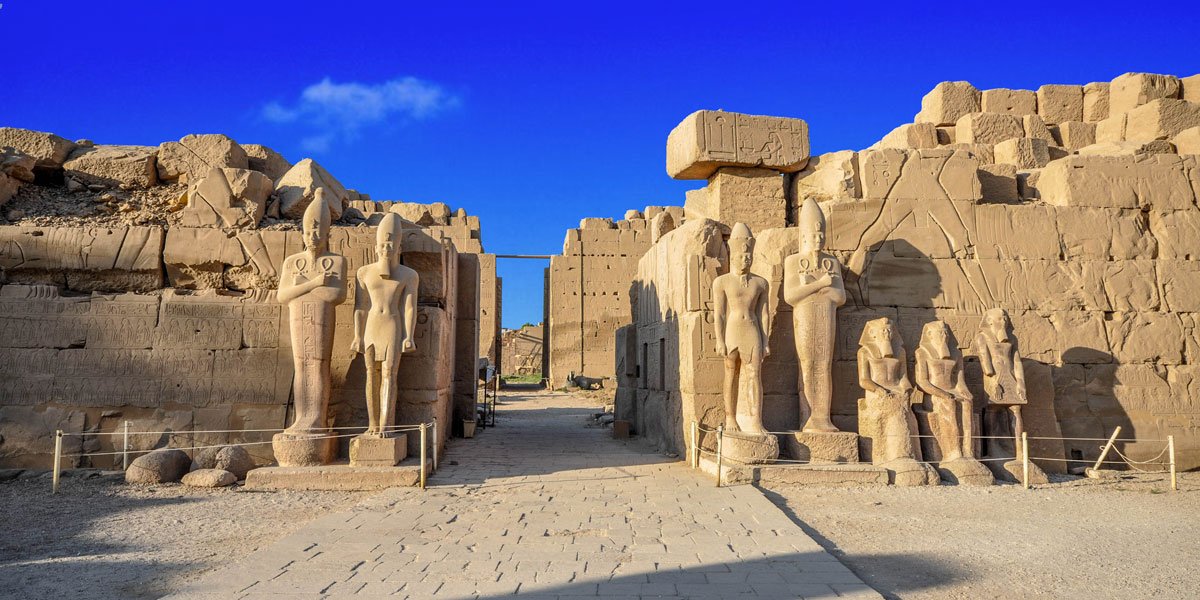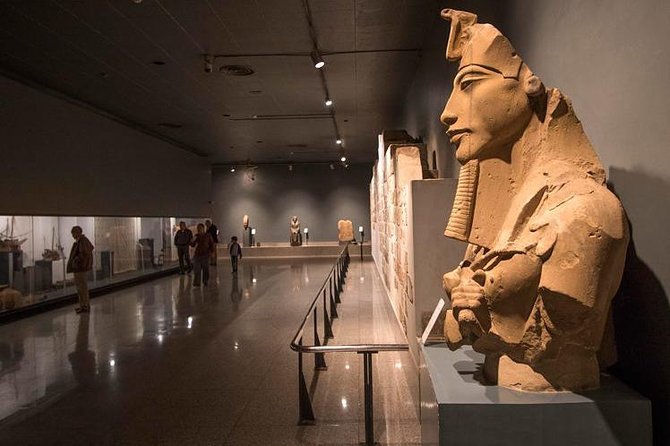The Karnak Temple in Luxor is one of the most awe-inspiring religious. Being the massive structure on the east side of river Nile in Luxor, it remained the center of the religious life of ancient Egypt for more than 2,000 years. The temple was mainly dedicated to worshipping Amun-Ra, yet it was also a place for holding ceremonies and grasping some power.
Now, Karnak Temple is one of the top tourist attractions in Egypt, as it provides a breathtaking expedition into the past. The tall columns, huge pylons, sacred lake, and elaborate hieroglyphs stand as a testimony to the superior artistry and genuine religious devotion of the ancient Egyptians.
Where is the Karnak Temple in Luxor?
The Karnak Temple is located 2.5 km north of the Luxor Temple on the eastern bank of the Nile River. It is part of the greater Theban necropolis, which also encompasses the Valley of the Kings and the Temple of Hatshepsut on the western bank.
History of Karnak Temple
Construction at Karnak Temple in Luxor started during the Middle Kingdom (around 2000 BCE) and continued on throughout the New Kingdom and subsequent dynasties. Almost every significant pharaoh at some point made their contribution to the site by adding statues, shrines, columns, and walls. Numerous enlargements were undertaken by notable rulers like Seti I, Ramses II, Hatshepsut, and Thutmose III over centuries.
Karnak was not one temple but a host of temples, chapels, pylons, and obelisks erected over time. It served as the center for the cult of Amun-the chief deity during the zenith of Theban power.
What to See at Karnak Temple, Luxor
Great Hypostyle Hall
One of the most famous associations of Karnak Temple, the Great Hypostyle Hall, has 134 colossal columns arranged in 16 rows. Upon examining the columns, one sees instances of hieroglyphs and depictions of pharaohs offering to gods. Walking amidst this forest of stone really gives you chills.
Sacred Lake
This big rectangular pool was involved in rituals and ceremonies. It still contains water today and is one of the few ancient sacred lakes that stand.
Avenue of Sphinxes
The ceremonial road linking Karnak with Luxor Temple, which is lined with ram-headed sphinxes. These were used during religious festivals such as Opet to carry statues of gods between the two temples.
Obelisks and Pylons
Karnak is also home to some of the tallest obelisks in Egypt, including one erected by Queen Hatshepsut. The pylons (massive gateway) mark the grand entrances built by different pharaohs
Why Visit Karnak Temple in Luxor?
Karnak is more than a ruin—it’s an architectural wonder that materializes the spiritual and political powers of ancient Egypt. For those visiting for the very first time or returning: Karnak offers:
Confirmation of its existence in ancient Egyptian religion and mythology.
The chance to walk in the footsteps of the pharaohs
Once-in-a-lifetime photo shoots at sunrise or sunset
Ranked amongst the world’s outstanding archaeological sites
The Tips for Your Visit to Karnak Temple
Opening Hours: 6.00 am-5.30 pm daily
Best Time to Visit: Early in the morning or late in the afternoon (cool temperatures, few pollutions)
Guided Tours: I recommend joining one to better grasp the deep history and symbology
Discover the Magic of Karnak Temple in Luxor
The Karnak Temple in Luxor is a living museum of ancient Egyptian history and civilization. The vastness, detail, and spiritual significance make it one of the most extraordinary historic sites in the world. Don’t miss the chance to explore this timeless wonder and uncover the legacy of Egypt’s greatest builders and priests from ancient times.
Karnak Temple must be visited during your Egypt tour if mythology, architecture, or history fascinates you ever so much.




